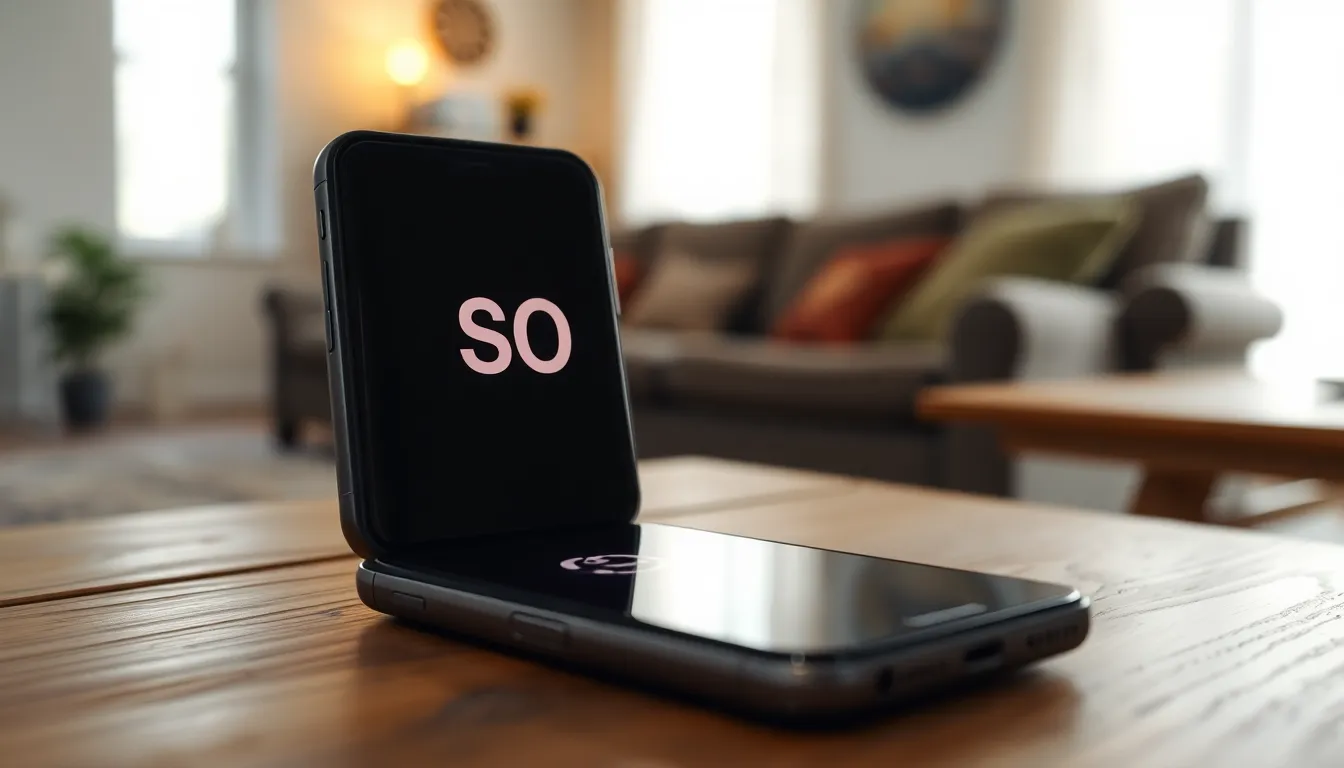If your iPhone keeps flashing that SOS signal like it’s trying to send out an emergency distress call, you’re not alone. Many users find themselves scratching their heads, wondering why their trusty device has suddenly decided to play the role of a drama queen. It’s like your phone’s throwing a tantrum, insisting it can’t connect to the network while simultaneously reminding you that it’s still very much alive.
This quirky behavior can be frustrating, especially when you just want to scroll through social media or respond to that important text. Understanding the reasons behind this SOS situation can save you from unnecessary panic and help restore your phone to its former glory. So, let’s dive into the mystery of why your iPhone keeps going to SOS and how to get it back to normal without losing your sanity.
Table of Contents
ToggleUnderstanding The SOS Feature
The SOS feature on the iPhone serves a crucial role in emergency situations. Users may encounter this mode when their device struggles to connect to a cellular network.
What Is SOS Mode?
SOS Mode enables iPhones to make emergency calls without a cellular signal. Activating this mode allows users to contact emergency services, even when they can’t access regular network services. This feature provides peace of mind, especially in critical situations where immediate help is vital.
How SOS Mode Works
When an iPhone enters SOS Mode, it searches for available networks, focusing on emergency services. The device utilizes any compatible networks, displaying an SOS signal when it successfully connects. By limiting access to emergency calls, iPhones prioritize users’ safety and ensure that help is reachable despite connectivity issues.
Common Reasons For iPhone Going To SOS

The SOS signal on an iPhone can occur for several reasons. Identifying the root cause helps users regain normal functionality quickly.
Software Glitches
Software glitches often trigger the SOS mode. System bugs can interfere with network connectivity. Restarting the device sometimes resolves these issues. Performing a software update also ensures users have the latest fixes. Clearing the cache might help rectify temporary problems. In some cases, restoring factory settings may be necessary for more persistent software conflicts.
Network Issues
Network issues frequently lead to the SOS signal on iPhones. Weak cellular reception can hinder connectivity in certain areas. Switching to Airplane mode temporarily can reset the network connection. Users should also check for outages from their service provider. SIM card problems could also contribute; reseating the SIM often fixes these. Verifying carrier settings through the device settings helps ensure proper network configurations.
Hardware Problems
Hardware problems may cause an iPhone to display SOS. Damage to internal components, like antennas, can prevent proper network connection. Users should inspect their devices for physical damage. Moisture exposure might lead to malfunctioning parts and can trigger SOS mode. Running diagnostics at an Apple Store aids in identifying hardware failures. If repair is needed, professional help will often restore full functionality.
Troubleshooting Steps
This section outlines essential steps to resolve the issue of an iPhone displaying SOS mode.
Restarting Your iPhone
Restarting the iPhone can resolve many issues. To do this, press and hold the side button and either volume button until the slider appears. After sliding to power off, the iPhone will turn off in a few moments. Turn it back on by pressing the side button until the Apple logo appears. This simple action clears temporary glitches, often restoring normal connectivity.
Checking Network Settings
Check network settings for any misconfigurations. Start by navigating to Settings and selecting Cellular. Here, ensure Cellular Data is turned on. Next, tap on Network Selection and toggle off Automatic. Scanning for networks manually might help re-establish a connection. Consider resetting network settings by going to Settings, selecting General, and then Reset. This process erases saved Wi-Fi passwords but can fix persistent connectivity issues.
Updating iOS
Updating the iPhone’s iOS version can resolve systemic problems. To check for updates, go to Settings, select General, and tap Software Update. If an update is available, connect to Wi-Fi and download it. Keeping the operating system updated ensures the device has the latest features and bug fixes, improving overall performance and network reliability. Regular updates enhance device security and efficiency.
Preventive Measures
Users can take specific steps to reduce the frequency of their iPhone displaying an SOS signal. Implementing these measures helps maintain device functionality and connectivity.
Regular Software Updates
Regular software updates play a crucial role in preventing connectivity issues. Apple frequently releases updates to fix bugs, improve performance, and enhance security. Staying up to date ensures the device operates with the latest patches. Users can check for updates by going to Settings, selecting General, and tapping Software Update. Scheduling these updates can minimize interruptions and maintain optimal performance.
Maintaining Network Connectivity
Maintaining strong network connectivity is essential for preventing SOS signals. Ensuring a stable connection reduces the chances of the iPhone defaulting to SOS mode. Users can check their signal strength and test different locations to find areas with better reception. Furthermore, replacing a faulty SIM card often resolves connectivity problems. Regularly resetting network settings provides a fresh start, fixing any lingering configuration issues that may affect network performance.
Dealing with an iPhone that keeps going to SOS can be a frustrating experience. Understanding the underlying causes is key to resolving the issue and restoring normal functionality. By following the recommended troubleshooting steps and preventive measures, users can significantly reduce the chances of encountering this problem again.
Staying proactive with software updates and monitoring network conditions can enhance the overall performance of the device. With the right approach, users can ensure their iPhones remain reliable communication tools, ready to connect when needed most.






